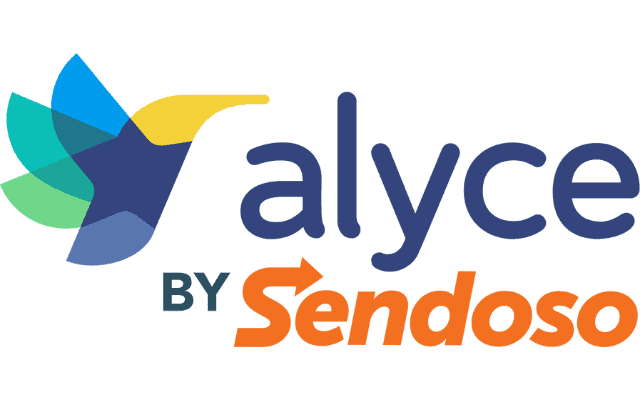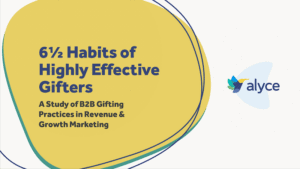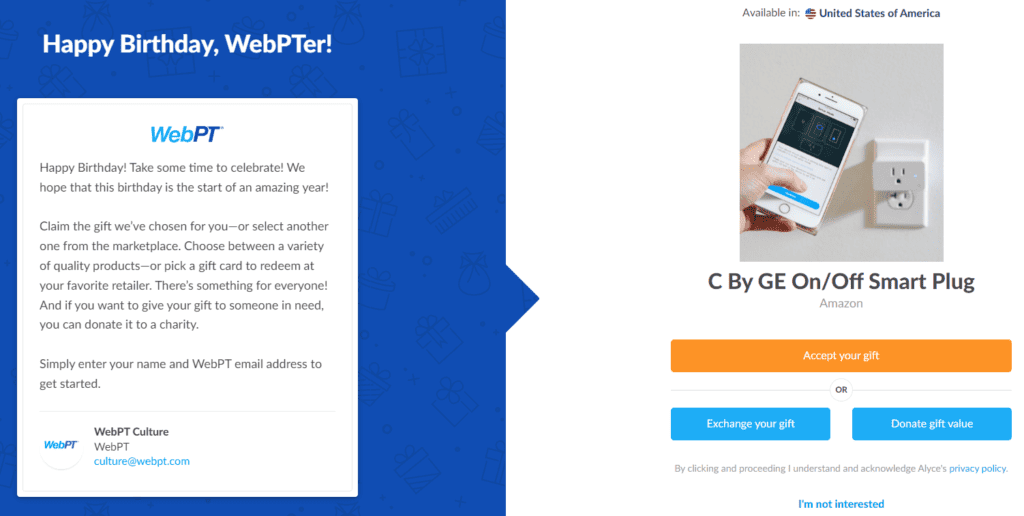
Have you noticed that remote teams feel disconnected lately? Not off the grid, just less enthusiastic? (No, we’re not talking about quiet quitting…)
Managing and motivating a virtual workforce isn’t easy. Tight labor markets mean offering remote and hybrid work is a necessity, yet most businesses haven’t yet “cracked the code” on how to maintain an engaged workforce without face-to-face daily interaction.
But let’s be honest — hosting another Zoom happy hour or playing “two truths and a lie” during your daily stand-up won’t cut it.
Genuine employee engagement and teamwork can be cultivated remotely but requires a more intentional approach.
We’ve been fully remote over the last two years and have seen the ups and downs that come with it. This guide unravels the dos and don’ts of remote employee engagement, sharing effective ways to boost loyalty, increase productivity, and elevate your company culture across the entire team.
Why Is Employee Engagement Important?
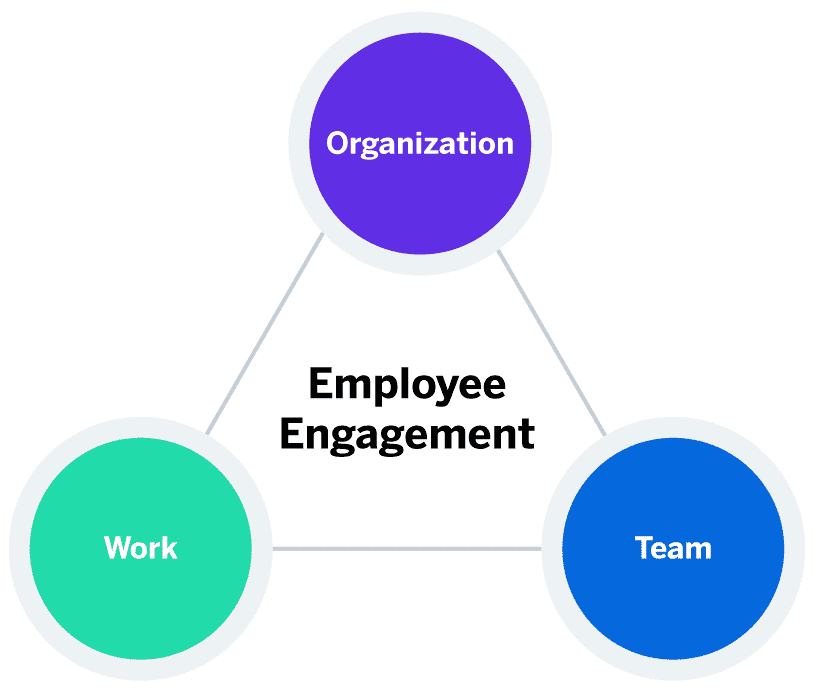
Employee involvement is the lifeblood of your organization. While you may be able to still reach quarterly goals with poor engagement, it affects health, creativity, and company-wide growth.
But first, what is employee engagement? Here’s a roundup of what leading HR researchers have said:
Gartner: Employee engagement is the extent to which employees feel passionate about their jobs, are committed to the organization, and put discretionary effort into their work.
Gallup: Employee engagement [is] the involvement and enthusiasm of employees in their work and workplace.
Glint: Employee engagement is the degree to which employees invest their cognitive, emotional, and behavioral energies toward positive organizational outcomes.
Quantum Workplace: Employee engagement is the strength of the mental and emotional connection employees feel toward the work they do, their teams, and their organization.
A resounding theme emerges from these expert-provided definitions. Employee engagement is a measure of an employee’s interest, desire, and commitment to an organization. And it can fluctuate given company culture, work-life balance, and how team members accomplish problem-solving.
So, why does engagement matter in the first place?
Employee Engagement Long-Standing Benefits
📈 Better performance and productivity
No surprise here. The top most engaged employees consistently outperform the bottom by over 20%. Engaged teams have a stronger understanding of the company, can think more creatively, and boost company profitability overall.
All of this ladders up to a 23% higher profit and earnings per share compared to companies with disengaged workforces.
🥰 Lower staff turnover
In today’s competitive labor market, employee engagement can make the difference between a fully-staffed team and dusting off your employer Indeed profile for the third time this quarter.
A happier workforce goes hand in hand with less turnover and higher referral rates. And when there’s a greater connection to the employer brand, there’s more “protectiveness” around whom one refers to work there.
💸 Minimal overhead/shrink
There are additional hidden savings that come with an engaged workforce. The shared sense of ownership discourages abusing company resources.
Companies that intentionally cultivate engagement have less absenteeism, recruitment, healthcare costs, and other reduced expenditures. If your employees are happy, they’ll act in the best interest of the company and their teams.
Given that companies embraced working remotely, how has it affected engagement for virtual teams?
Virtual Team Engagement Challenges
Why do remote teams feel distant, unengaged, and exhausted even if remote is preferred? We know that employee engagement is important, but we’ve been failing at it.
The reality is that remote working leads to a greater risk of burnout and disengagement if not carefully managed.
Why? We can point to a couple of reasons.
🥱 Remote technology fatigue
Have you felt exhausted after a day of one-too-many Zoom conference calls? You’re not the only one.
Brain imaging studies show that video conferencing can be even more mentally taxing than in-person meetings. With fewer environmental cues, it becomes harder to “read the room” during video calls, and your brain works overtime to engage.
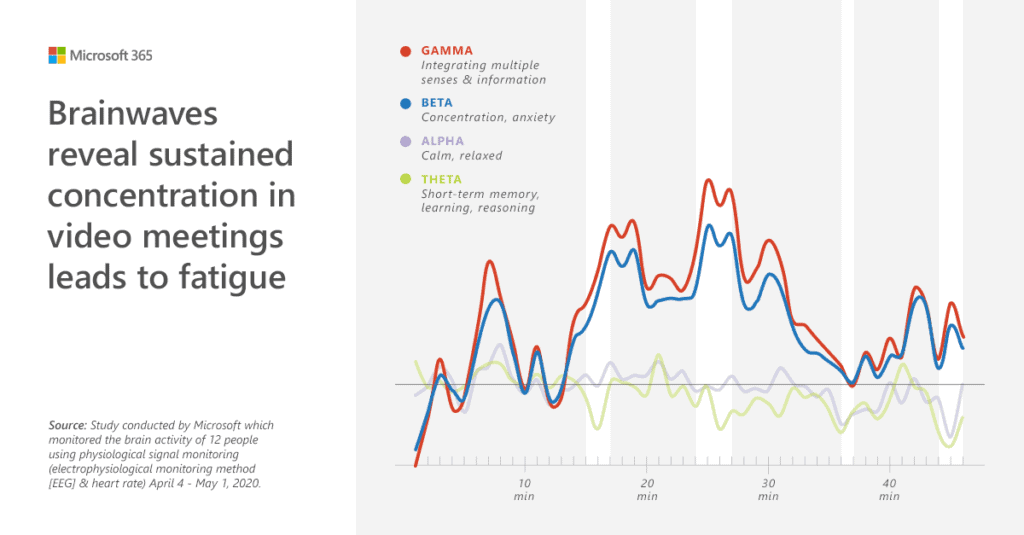
The disparate nature of numerous workplace apps creates more app fatigue for people to stay visible in the virtual office. Check-ins are intentional and calendared, rather than during casual collisions throughout the workday.
🏋️ Increased workloads
When the work from home (WFH) shift began in 2020, we all had a rosy-eyed idea of what remote work would look like. Think: a relaxing pre-work walk around the neighborhood, settling into your home office, and productively working until punching out at 5 pm. Don’t forget time to prepare a delicious, healthy meal at lunch or feed your sourdough starter.
The reality is a small percentage of remote workers live alone and many are parents. That quiet home office, in reality, often becomes the kitchen table workspace while planning dinner or helping with afterschool homework.
Flexible working hours help employees work around family demands but can be taxing in their own right. Weekend work has doubled in the past year. It’s easier than ever to shoot off one more email before bed or log on for a bit Sunday morning.
For some, 9-to-5 workdays have become 9-to-9s, and “in the office” now can mean anywhere your phone has service. People are beginning to feel the cognitive strain of balancing everything, all at once.
12 Virtual Employee Engagement Ideas that Actually Work
To successfully thrive in a remote-first workforce, companies need to interact with employees in a way that makes them feel valued and their time respected.
The core pillars of Outbound Love are useful here. Effective employee engagement is personal, relevant, and thoughtful.
Here are our top employee engagement ideas that your remote workforce will actually care about.
1) Reconsider “Mandatory Fun” Virtual Meetings
Non-optional trivia meetings, happy hours, or murder mystery events have good intentions, but these virtual team-building activities often feel like a waste of time.
“Last week we were all SLAMMED with work, and our team leader thought it was a good idea to release stress by taking two hours out of a day for team bonding, which included ‘two truths and a lie.’ Then, I stayed 2 extra hours to make up for it. I was beyond annoyed.”
—u/theantspantsdance on Reddit
Employees don’t always want yet another video call on their calendar, let alone one that isn’t work related. While the “outcomes over hours” approach to measuring employee performance is a welcome shift, it means employers should be more respectful than ever of mandated events that take away from productive work time.
The solution here is to survey your team, find out what time works best for them, and schedule it within reasonable work hours.
2) New-Hire Onboarding Swag Boxes
After making it through the application process successfully, a long and winding onboarding experience often overwhelms new hires. Remote onboarding is often isolating and makes it difficult to feel fully a part of a new team.
Help new hires instantly feel like they belong through branded swag boxes. A premium-quality hoodie, T-shirt, cap, and backpack go a long way to welcome new employees. Successful onboarding improves retention by up to 82%, according to Glassdoor.
Want to take your employee swag to the next level with philanthropy? Invite employees to pick the charity of their choice to receive a $100 donation in their name. This builds a deeper emotional connection than laptop stickers or a cocktail kit ever could.
3) Protect Their Time
Remote work is all about maximizing time — skipping lengthy commutes, spending more time with family, and less waste. Make sure your internal engagement strategies preserve work-life balance.
Be thoughtful about mandatory meetings, and respect working hours. Just because team members have Slack on their phones doesn’t mean you should expect a message response instantly.
Creating space for decompression time will mean your employees will be more energized and creative when it is time to engage.
4) Trim Collaboration Tools
Reconsider adding another “fun” Slackbot or new social app to your remote workforce’s communication workflow. Collaboration tools like Slack and Asana can keep everyone aligned on tasks remotely and increase productivity by up to 25%. Great, right? Well, more isn’t always better.
Picture this: You get a Slack notification from a coworker to check your email. In your inbox is a suggested change to a Google Slide your team has been working on. You add the finishing touches to the slide, then mark the presentation as “complete” in Asana before hopping onto your next Zoom call.
Then, the completed task is automatically posted into the Slack channel following its typical task message template — and it wasn’t mission-critical for everyone to know.
Virtual teams want to collaborate efficiently and transparently. Somewhere along the line, we’ve lost sight of that goal, and workers are now drowning in endless pings, notifications, and messages.
5) Free Food and Drinks
Really. It’s that simple. Want a foolproof way to show employee appreciation or encourage active engagement at a meeting? Schedule Grubhub or snack box deliveries.
And since they’ll likely make the rounds meeting with new employees, kick off those virtual coffee breaks with generous Starbucks or Dunkin gift cards.
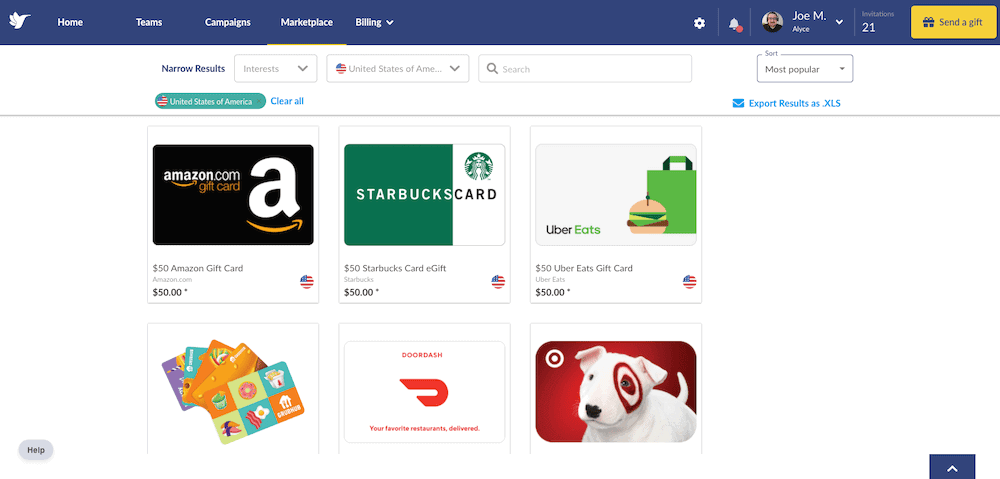
6) Invest in Employee Interests
What activities are included in your team’s #5to9? Support your employees’ well-being as a whole person, including their nonwork interests.
Offer a #5to9 stipend or gift card to team members: an amount they can spend on their new cake decorating set, video game, or hiking shoes. Create a Slack channel dedicated to sharing these highlights.
This in turn becomes the virtual employee water cooler, allowing them to gossip about upcoming Netflix episodes or celebrate that globetrotting adventure they’ve always wanted.
7) Don’t Micromanage
Instead, set outcome-based goals and track progress at set intervals. It’s fine if you don’t know what your employees are up to at a given hour. What matters is that the work gets done.
Micromanagement actively leads to disengaged employees: it’s difficult to feel creativity and autonomy with someone watching your every move.
8) Employee Recognition Gifts
Show that you appreciate their hard work. Recognize individual and team accomplishments with a shoutout, then follow up with a gift of their choice. Offer incentives for performance in a way that feels genuine, not gimmicky.
Aside from company swag, encourage team members to share their gratitude and celebrate accomplishments on social media. LinkedIn is best for this type of sharing since it lets employees connect and promote the employer brand in a meaningful way.
9) Wellness Initiatives
Combat burnout by prioritizing physical and mental health. Consider offering employee gym memberships, meditation app subscriptions, fitness trackers, more PTO allowance, or other perks focused on employee wellbeing. While it may seem counterintuitive to encourage more time “offline,” doing so boosts employee morale in the long run.
“I have quite a few benefits but my favorite is having 1 Friday off a month. Those weeks go by much faster, give me something to look forward to, and let me recharge for work with a long weekend.”
—u/FI-by-31 on Reddit
10) Employee Referrals
Create an employee referral program! Current employees can help seek qualified candidates who best align with organizational culture. Better company culture fit means stronger engagement. Offer an attractive referral bonus or gift for successful referrals.
Consider hosting a company-wide virtual event for leaders to share what makes the ideal, top-tier candidate. Also, cover tips to address the polite objections like “I’m not looking for a change right now,” to help employee referrals become successful.
11) Celebrate Employee Milestones
Show your team you care by sending a gift on personally significant days, such as a work anniversary.
WebPT implemented a work anniversary and birthday campaign across their workforce. They created an automatic gifting service with Alyce, offering recipients a gift of their choice at personal milestones events. Their positive Glassdoor reviews, personal thank-you notes, and overall employee satisfaction were raised significantly.
12) Equality in the Hybrid Workplace
Post-pandemic, hybrid workplaces are becoming more popular. You may have a workforce comprised of both in-person and remote team members.
Going out for a coffee with the in-office team? Consider getting lattes delivered to remote team members, or send them a Starbucks gift card. Make sure remote workers feel just as included as those interacting face-to-face.
Looking Ahead to Boost Virtual Employee Engagement
Effective engagement really just gets back to basics: respecting employee time, giving thoughtful workplace gifts and incentives, recognizing achievements, and equipping teams with tools for a well-balanced life.
TLDR: show you care. Yes, compensation certainly matters, but so does emotional and psychological support, too.
Lighthearted employee engagement activities like virtual escape rooms or personality quizzes can still boost morale on occasion but shouldn’t be the foundation of an intentional engagement strategy.
By thoughtfully creating a work environment to foster engagement regardless of location, companies can thrive now and into the future, whether their workforce is remote, hybrid, or in-office.
⬇️ Free Download: Outbound Love Playbook: Stand Out By Being Personal, Relevant, & Thoughtful
